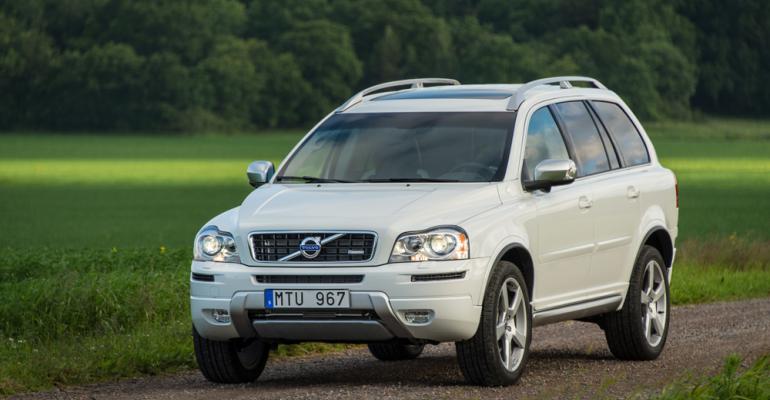DETROIT – Volvo has launched a plan to reinvent itself that involves the creation of new products, powertrains and technologies.
“Volvo has created such uniqueness over the years, but it’s fair to say we may not have exploited that uniqueness in a most convincing way,” Alain Visser, senior vice president-marketing, sales and customer service, says during a meeting with journalists and Volvo executives here. “We’re going back to our roots and the strength we have built over decades.”
The centerpiece of the Swedish automaker’s new plan is volume growth, particularly in the U.S. and China. Volvo executives say they plan to raise total global volume to 800,000 units from 450,000 today, with 200,000 of those deliveries coming from China and 100,000-plus from the U.S.
Volvo last year sold 35,000 units in China and is tracking to deliver just shy of 60,000 vehicles there this year. In the U.S., where Volvo is more established, sales through October were just 52,112, according to WardsAuto data.
The automaker’s U.S. sales have been on the decline for years, dropping from a 10-year high of 139,067 in 2004 to 68,117 in full-year 2012. The fact Volvo used to sell in excess of 100,000 units in the U.S. annually gives executives faith the automaker can return to those levels.
“We have sold above 130,000 (units), and we have a dealer network capable of selling that much. The current 60,000-65,000 cars are too low for our dealer network, so we have an infrastructure that outweighs the volume,” Visser says. “So it’s in our and our dealers’ interest to increase volume, and with our product plans we believe 100,000-plus is absolutely possible.”
Perhaps the most important new product on the horizon, especially for the U.S., is an all-new XC90 midsize CUV slated to go on sale in 2015. The current XC90 was launched in 2003, and the model has received little updating since.
U.S. XC90 deliveries through October were down 27.9% compared with like-2012 to 5,653 units, according to WardsAuto data.
The new XC90 will be underpinned by Volvo’s new scalable architecture, which will shoulder the automaker’s 60 and 90 series vehicles and will feature new Volvo-developed powertrains.
All new Volvos, including the XC90, will be powered by a 4-cyl. turbocharged engine producing about 240 hp. As consumers move up in trim levels, the 4-cyl. mills will be paired with an electric-rear axle for improved power and fuel economy.
Top-of-the-line XC90s will be powered by a plug-in electric-vehicle powertrain making more than 300 hp. Volvo has yet to announce if models other than the XC90 will be offered as PHEVs in the U.S. market.
Lex Kerssemakers, senior vice president-product strategy and vehicle line management, says moving to Volvo-developed engines will reduce complexity, noting the automaker currently relies on engines from a number of different sources, including former owner Ford.
“All the (sourced) engines are great, but they require a lot of engineering,” he says. “Now we will have two engine families – diesels and petrol – that are applicable for the whole world. That saves money to enable us to rollout new products.”
After the arrival of the new 4-cyl. engines, which debut in the U.S. later this year, Volvo plans to add 3-cyl. derivatives, although officials don’t say whether the smaller mills will be offered in the U.S.
Following the XC90 will be vehicles based on a new C-segment platform developed by Volvo that will be shared by parent-company Geely.
“It will be a no-compromise architecture, for the first time absolutely Volvo,” says Hakan Samuelsson, president and CEO. “It will share transmissions and a 3-cyl. engine with a future Geely product, which is an advantage for us.”
Hakan says Volvo has committed $11 billion to developing the new engine lineup and architectures and has received no direct financial support from Geely.
He describes Volvo’s relationship with China-based Geely as “pragmatic,” adding it’s a “very successful type” of cooperation.
“There’s no holding structure for engineering or whatever,” he says. “It’s two companies working in parallel with the same owner.”





